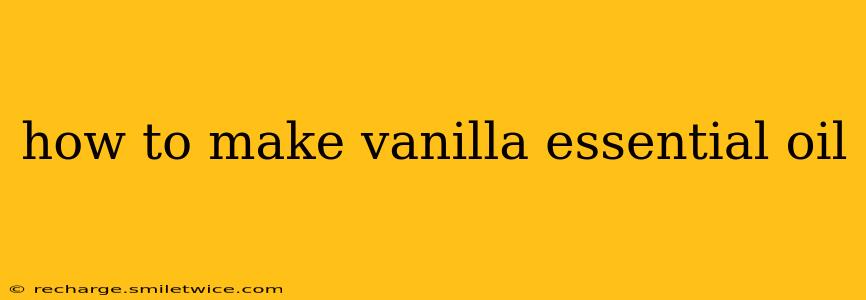Vanilla essential oil is highly prized for its rich, warm aroma and is frequently used in perfumes, aromatherapy, and baking. However, extracting true vanilla essential oil is a complex and costly process, significantly different from simply extracting vanilla flavoring from vanilla beans. This article will delve into the process, dispelling common misconceptions and highlighting the challenges involved.
What is Vanilla Essential Oil?
Before we explore the extraction process, it's crucial to understand that "vanilla essential oil" is often a misnomer. True vanilla essential oil, extracted directly from vanilla beans, is exceptionally rare and expensive due to the low yield. What's commonly sold as "vanilla essential oil" is frequently a flavoring extract or a synthetically created fragrance. This distinction is important because the methods for obtaining these differ drastically.
How is Vanilla Flavoring Extract Made?
Vanilla flavoring extract is made by steeping vanilla beans in a mixture of alcohol (usually ethanol) and water. This process extracts the vanillin and other flavor compounds from the bean, creating a concentrated flavoring agent. This is not an essential oil. Essential oils are volatile aromatic compounds extracted through steam distillation or other processes, while vanilla extract utilizes a solvent extraction.
Can I Make Vanilla Essential Oil at Home?
Unfortunately, producing true vanilla essential oil at home is impractical and nearly impossible without specialized equipment. The process requires complex machinery and expertise. The yield of essential oil from vanilla beans is extremely low, making home extraction a costly and inefficient endeavor.
What are the Methods for Extracting Vanilla Essential Oil on an Industrial Scale?
Industrial extraction of vanilla essential oil, though rare, usually involves:
-
Solvent Extraction: This method uses solvents to extract the aromatic compounds from vanilla beans. It's more efficient than steam distillation but requires careful solvent removal to ensure product safety. This method is still more likely to produce a vanilla absolute rather than a true essential oil.
-
Supercritical Fluid Extraction (SFE): This advanced technique uses supercritical carbon dioxide (CO2) as a solvent. It's considered a "greener" method, leaving less chemical residue than traditional solvent extraction. Even this method, however, will not yield large quantities of essential oil.
How Much Vanilla Does it Take to Make Vanilla Essential Oil?
The yield of essential oil from vanilla beans is exceptionally low – significantly less than 1%. This means that extracting even a small amount of true vanilla essential oil requires a vast quantity of vanilla beans, making it incredibly expensive.
What is the Difference Between Vanilla Absolute and Vanilla Essential Oil?
Vanilla absolute is a concentrated extract obtained through solvent extraction, whereas essential oil is extracted through steam distillation. Both are highly fragrant, but the absolute will contain more of the heavier, less volatile compounds from the vanilla bean. Again, true vanilla essential oil is extremely rare.
Where Can I Buy Authentic Vanilla Essential Oil?
Due to its rarity and cost, finding authentic vanilla essential oil is challenging. Be highly skeptical of any product marketed as such at an affordable price. It's far more likely to be a vanilla flavoring extract or a synthetic fragrance. Always check the label for accurate ingredient information.
Conclusion
While making a vanilla flavoring extract at home is feasible, producing true vanilla essential oil is beyond the scope of home experimentation. The low yield and the complex equipment required make it an industrial-scale process. If you're seeking the rich aroma of vanilla, using a high-quality vanilla extract is a far more practical and affordable option. Always be aware of the differences between extract, absolute, and essential oil when making purchasing decisions.
